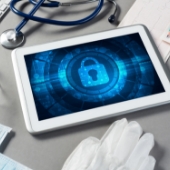 The Internet of Things (IoT) is estimated to reach 29 billion by 2030. While all sectors grapple with the security implications posed by this advanced technology, the healthcare industry is at particular risk because of its complex landscape and the sheer number of interconnected gadgets. In this article, we’ll discuss the best practices to keep your IoT devices secure.
The Internet of Things (IoT) is estimated to reach 29 billion by 2030. While all sectors grapple with the security implications posed by this advanced technology, the healthcare industry is at particular risk because of its complex landscape and the sheer number of interconnected gadgets. In this article, we’ll discuss the best practices to keep your IoT devices secure.
Increase network security
To protect vulnerable devices that don’t have integrated controls, administrators should consider disconnecting them from the internet for patient care. If a device must stay connected, you can collaborate with vendors to determine where it needs to connect and only grant access through an allowlist. This way, networks remain secure while still allowing the necessary connections.
You can also protect your systems by blacklisting any malicious sites, segmenting public networks from the rest of the infrastructure, and limiting access to assets on a virtual LAN. Administrators may further restrict traffic flow between departments for additional security.
Monitor assets and devices
To quickly identify potential security risks, creating a comprehensive list of all devices connected to the network is essential. However, with guests and patients logging in too, it can be difficult to keep tabs on them all. Investing in inventory tools that monitor connected devices and their specifications, such as operating system type, could prove invaluable for your organization’s security posture.
Encrypt patient data
Encrypting electronic health records is an ideal way to protect your patients and organization from potential data breaches. Encryption guarantees that confidential data remains inaccessible to hackers even if it’s intercepted during transmission or storage.
Implement multifactor authentication (MFA)
With MFA, users must provide more than just their username and password to prove their identity. This could be a PIN or a verification code sent over SMS or biometric data such as fingerprints or retina scans. MFA provides an extra layer of security to your networks and devices, making it difficult for hackers to gain access to accounts containing vital patient information.
Use IoT security tools
With the surge of IoT technology, many vendors are now offering several security tools that assist network administrators with inventory tracking, traffic management, and network visibility. From authentication control to data stream regulation, these solutions offer timely detection of potential threats before any damage can be done.
Are you looking to enhance the IoT security of your healthcare organization? Call our security specialists today.



